Description
The UGF 2000 aerosol generator is able to atomize liquids with a binary nozzle.
The UGF 2000 comprises an adjustable binary nozzle for adjustment of the desired mass flow and a cyclone. Unlike the AGF series, UGF 2000 has a cyclone with built-in control air. The control air is adjusted using a micrometer screw on a needle valve. By opening this valve, the aerosol concentration is able to be reduced by a factor of approx. 500 through the addition of control air. As a result, the generator is ideally suited for testing laminar flow boxes and clean rooms with low volume flow.

Fig. 1: UGF 2000 functional diagram
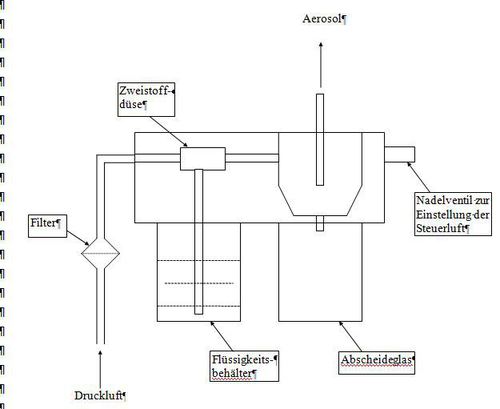
Fig. 2: UGF 2000 schematic diagram
The compressed air is supplied to a binary nozzle via a pneumatic on/off switch and an adjustable pressure regulator. The mist of droplets generated by the nozzle flows tangentially into a cyclone. Large particles are separated here by centrifugal force and drip into a separate reservoir. The remaining droplets leave the cyclone via the so-called "immersion tube". The size spectrum of these droplets is determined on the one hand by the primary droplet spectrum generated by the nozzle, but especially by the separation characteristics of the cyclone on the other hand.
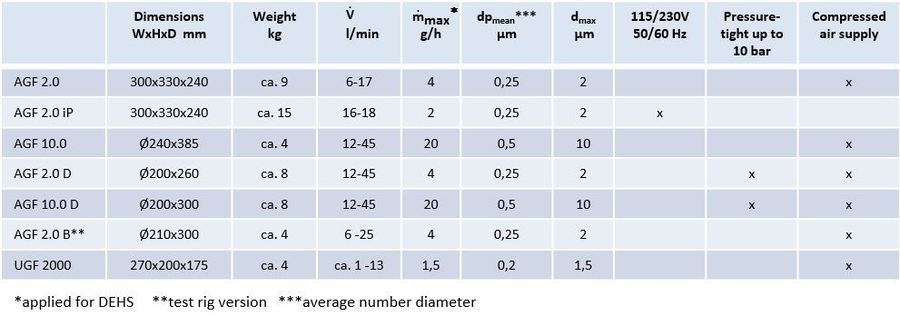
Table 1: Overview of the AGF and UGF systems
Benefits
dpmax in MPPS-range = 0.1 – 0.3 μm
Known and reproducible particle size distribution using a cyclone
Constant particle rate
Low particle concentration
Long dosing time
Variable particle concentration by a factor of 500 through adjustment of the primary pressure and control air
Compact, light, portable
Easy handling and solid construction
Datasheet
dpmax in MPPS-range = 0.1 – 0.3 μm
Known and reproducible particle size distribution using a cyclone
Constant particle rate
Low particle concentration
Long dosing time
Variable particle concentration by a factor of 500 through adjustment of the primary pressure and control air
Compact, light, portable
Easy handling and solid construction
Applications
Clean room technology:
HEPA/ULPA filter test
Acceptance tests and leak tests as per ISO 14644 and VDI 2083
Laminar flow boxes
Recovery tests
Filter testing, quality control:
Filter cartridges, filter media, particulate air filters for low volume flows and small filter surfaces
Smoke detector tests
|
|
| |||||||||||||||||||||||||
|
|
| |||||||||||||||||||||||||
|
|
|
| ||||||||||||||||||||||||
|
|
| |||||||||||||||||||||||||
購(gòu)買(mǎi)咨詢(xún)
(已有0條咨詢(xún))商品評(píng)論
(已有0條評(píng)論)購(gòu)買(mǎi)流程
1.購(gòu)買(mǎi)產(chǎn)品:點(diǎn)擊“立即購(gòu)買(mǎi)”→填寫(xiě)產(chǎn)品數(shù)量、聯(lián)系方式并提交→會(huì)員顧問(wèn)訂單處理→合同簽訂。
2.咨詢(xún)產(chǎn)品:請(qǐng)聯(lián)系會(huì)員顧問(wèn)或致電會(huì)員客服電話。
3.如果您還不是我們的會(huì)員,請(qǐng)先注冊(cè)。
4.最小起訂數(shù)量:1 ,進(jìn)口產(chǎn)品貨期,請(qǐng)跟產(chǎn)品擔(dān)當(dāng)聯(lián)系!
品牌擔(dān)當(dāng):
投訴電話:17717909117
聯(lián)系方式: 電話:021-52069907 分機(jī) 或撥0轉(zhuǎn)總機(jī),傳真:010-52060857
維修流程
- 1、技術(shù)溝通,初步判斷問(wèn)題電話,與客戶(hù)進(jìn)行初步溝通、了解并初步判斷儀器所出現(xiàn)的故障問(wèn)題。
- 2、簽訂維修協(xié)議由我公司向客戶(hù)發(fā)送儀器維修協(xié)議,客戶(hù)需如實(shí)填寫(xiě)內(nèi)容并回傳以便我司對(duì)儀器做進(jìn)一步判斷。
- 3、客戶(hù)郵寄儀器客戶(hù)可按照我司地址郵寄儀器,并將快遞單拍照發(fā)送至您的專(zhuān)屬客服進(jìn)行備案。
- 4、詳細(xì)診斷機(jī)器故障我司收到郵寄儀器后會(huì)對(duì)郵寄的儀器進(jìn)行拍照并開(kāi)箱檢驗(yàn),對(duì)儀器做進(jìn)一步故障判斷。
- 5、支付維修費(fèi)用如客戶(hù)儀器在保修期內(nèi),我司不收取任何維修費(fèi),如客戶(hù)儀器在保修期外,我司會(huì)適當(dāng)收取維修費(fèi)。
- 6、郵寄儀器給客戶(hù)我司將維修好的儀器按客戶(hù)地址進(jìn)行拍照并郵寄,自此雖維修協(xié)議終止,但我司將提供終身免費(fèi)答疑及技術(shù)指導(dǎo)。
| Testo 340 煙氣分析儀 | Testo350 煙氣分析儀 | PMS塵埃粒子計(jì)數(shù)器 | TSI塵埃粒子計(jì)數(shù)器 | Lighthouse塵埃粒子計(jì)數(shù)器 | Metone塵埃粒子計(jì)數(shù)器 |
| HACH塵埃粒子計(jì)數(shù)器 | TSI氣溶膠發(fā)生器 | ATI氣溶膠發(fā)生器 | Palas氣溶膠發(fā)生器 | Topas氣溶膠發(fā)生器 | Palas靜電中和器 |
| Topas靜電中和器 | Grimm粒徑譜儀 | TSI粒徑譜儀 | Topas粒徑譜儀 | Palas粒徑譜儀 | TSI掃描電遷移率粒徑譜儀 |
| HTV 甲醛檢測(cè)儀 | HTV-M甲醛檢測(cè)儀 | TVOC 檢測(cè)儀維修 | Grimm掃描電遷移率粒徑譜儀 | Palas掃描電遷移率粒徑譜儀 | Brechtel掃描電遷移率粒徑譜儀 |
| TSI 8530粉塵儀 | TSI 8532粉塵儀 | TSI 8533粉塵儀 | Rad7 氡檢測(cè)儀 | TSI 8534粉塵儀 | Thermo PDR-1500粉塵儀 |
| ATI 2i光度計(jì) | ATI氣溶膠稀釋器 | 風(fēng)量罩 | 風(fēng)速儀 | 空氣品質(zhì)檢測(cè)儀 | EN779測(cè)試臺(tái)改造 |
| Dustmate 粉塵儀 | TSI 8108大顆粒氣溶膠發(fā)生器 | TSI 3450單分散氣溶膠發(fā)生器 | 車(chē)身氣密性檢測(cè)設(shè)備 | 風(fēng)管漏風(fēng)量測(cè)試設(shè)備 | 凝聚核粒子計(jì)數(shù)器校準(zhǔn)裝置 |
| 粒子計(jì)數(shù)器校準(zhǔn)裝置 | 更多型號(hào)請(qǐng)咨詢(xún)客服19mro@19mro.com |
技術(shù)文檔下載
- 2019-02-28 20:04Eurovent 4/21-2018,一般通風(fēng)過(guò)濾器能效估算
- 2018-12-21 19:26Palas Promo 2000氣溶膠粒徑譜儀原版手冊(cè)
- 2018-04-18 21:31匯分 3322 EN779專(zhuān)用氣溶膠發(fā)生器使用手冊(cè)
- 2018-03-24 16:09硝酸銨氣溶膠揮發(fā)動(dòng)力學(xué)_劉雄,沈濟(jì)
- 2018-03-24 15:28煙火式氣溶膠滅火系統(tǒng)——一種滅火新技術(shù)_楊靜
- 2018-03-24 14:21室內(nèi)氣溶膠顆粒物沉積特性的實(shí)驗(yàn)研究_施孝增、吳家正、李曹縣、鄢慶春
- 2017-12-29 15:27Topas ATM-243氣溶膠發(fā)生器原版資料
- 2017-12-23 16:39檢測(cè)用凝聚式氣溶膠發(fā)生器的高壓改造_吳憲,石巖
- 2017-12-22 13:13煙煤和石油焦為原料的氣流床氣化及間歇排渣系統(tǒng)的數(shù)值模擬_孫鐘華
- 2017-12-22 11:52用安德森空氣生物采樣器采集病毒氣溶膠的研究_陳嵐,車(chē)紅,任麗麗,王健偉
- 2017-12-21 17:26檢測(cè)用凝聚式氣溶膠發(fā)生器的高壓改造_吳 憲,石 巖
- 2017-12-21 16:48用于放射性納米氣溶膠模擬的準(zhǔn)單分散氣溶膠發(fā)生器的研制_粟永陽(yáng),朱鳳蓉,劉龍波,韋冠一,李志明,周?chē)?guó)慶,張志弘,伊小偉
- 2017-12-21 16:29粉-粒雙層濾料顆粒床對(duì)PM2.5的過(guò)濾特性研究_石開(kāi)玉,楊國(guó)華,田素瑞,蔡卓均,向 紅
- 2017-12-21 16:19一種納米氣溶膠發(fā)生系統(tǒng)的設(shè)計(jì)及性能測(cè)試_麥華俊,蔣靖坤,何正旭,郝吉明
- 2017-11-11 17:24賀蘭山兩側(cè)沙漠及污染城市CCN分布特征的觀測(cè)研究_桑建人
- 2017-11-11 17:07氣溶膠濃度及測(cè)試粒徑對(duì)高效過(guò)濾器計(jì)數(shù)法檢漏測(cè)試的影響_高龍
- 2017-11-11 16:04大氣顆粒物吸濕性研究_王宗爽
- 2017-11-11 15:55北京冬季氣溶膠吸濕性的觀測(cè)與分析_王軒
- 2017-11-11 15:33α-蒎烯氧化生成二次有機(jī)氣溶膠的實(shí)驗(yàn)研究
- 2017-11-11 15:14基于實(shí)測(cè)PM_2_5_能見(jiàn)度和相對(duì)濕度分辨霧霾的新方法_馬楠
- 2017-11-11 14:39實(shí)驗(yàn)室發(fā)生納米氣溶膠吸濕性表征_王軒 (1)
- 2017-09-18 18:20新型流化床氣溶膠發(fā)生裝置及其特性_李永旺,趙長(zhǎng)遂,吳新,韓松,魯端峰,沈湘林
- 2017-09-17 16:50Brechtel氣溶膠發(fā)生器使用指南
- 2016-05-27 14:21Palas HMT1000油霧分離器產(chǎn)品ppt
- 2016-01-21 14:32ATI TDA-5C熱發(fā)中文產(chǎn)品資料

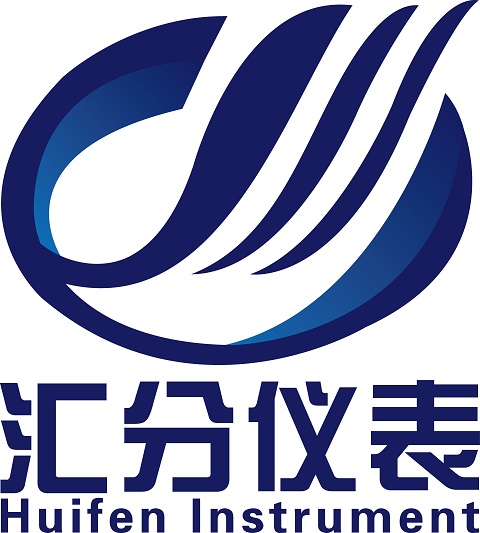

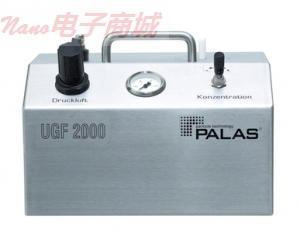






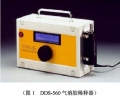

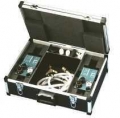
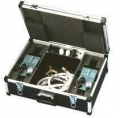


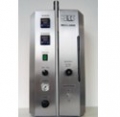
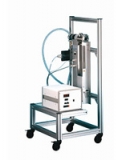



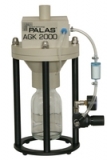
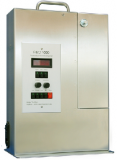





相關(guān)商品